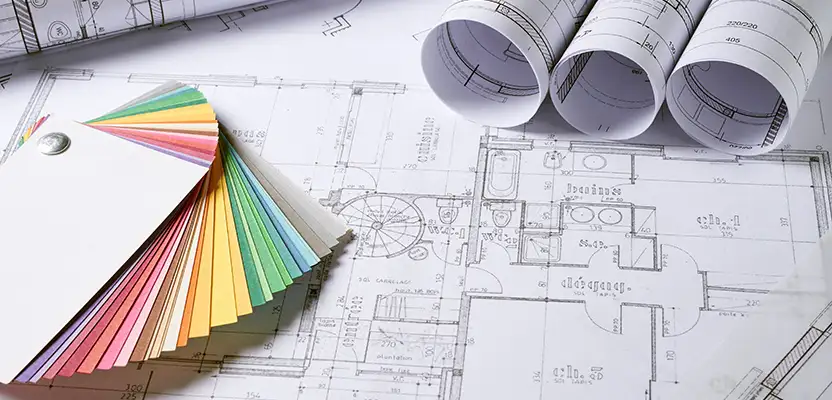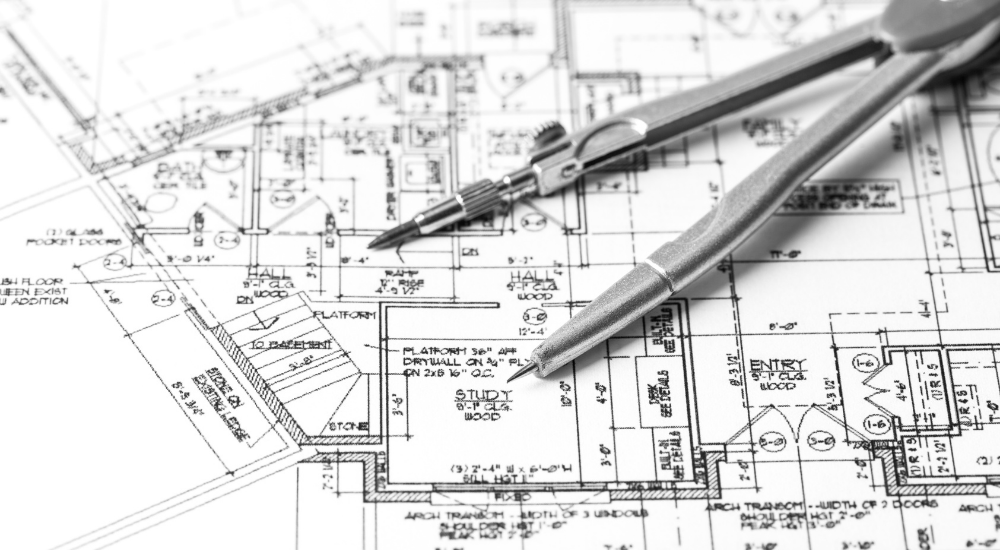Comprehending the Diverse Occupation Paths Available for Aspiring Architect
As an ambitious Architect, you have a world of career paths waiting for you. Whether you're attracted to standard design or the nuances of sustainable layout, there's a particular niche that lines up with your rate of interests.
Conventional Architecture: Creating Structures and Frameworks
Traditional design concentrates on creating structures and structures that mix performance with visual allure. Your designs can mirror social heritage, showcasing neighborhood customs while fulfilling modern demands.
You'll establish skills in preparing, model-making, and website evaluation, permitting you to picture and connect your ideas properly. Engaging with customers, you'll need to comprehend their vision and convert it into feasible designs.
Moreover, constructing codes and sustainability methods are vital in your job, guaranteeing your frameworks are risk-free and eco friendly. As you expand in your job, you'll find opportunities in household, commercial, or perhaps repair jobs, each offering unique difficulties. Welcoming typical style leads the way for a meeting job that pays tribute to the past while shaping the future.
Urban Preparation: Shaping Neighborhoods and Public Spaces
As an aspiring Architect, you can play a necessary function as a city organizer, changing just how neighborhoods engage and work. By utilizing area engagement methods, you'll guarantee that residents have a voice fit their environment. And also, incorporating sustainable style concepts will help develop rooms that not only fulfill today's demands however additionally shield the future.
Duty of Urban Planners
While lots of may believe of designers as the sole visionaries behind structures, metropolitan coordinators play an essential role in forming the broader landscape of communities and public areas. By working together with numerous stakeholders, you'll aid design parks, transportation systems, and property areas that advertise social communication and accessibility. Your knowledge in spatial design and neighborhood characteristics permits you to picture future growth while preserving social heritage.
Neighborhood Involvement Approaches
Reliable area involvement techniques are crucial for urban coordinators to assure that the voices of locals are listened to and valued in the preparation process. To foster purposeful dialogue, you ought to focus on open discussion forums and workshops where community members can reveal their concepts and concerns. By actively listening and integrating comments, you'll develop spaces that reflect the neighborhood's requirements, inevitably leading to even more effective and sustainable urban atmospheres.
Sustainable Style Concepts
When making city rooms, incorporating sustainable design principles is vital for developing settings that grow both environmentally and socially. You should start by concentrating on power performance, using products that reduce waste and promote recycling. Consider incorporating environment-friendly rooms, like yards and parks, to boost biodiversity and boost air high quality. Promoting walkability and public transport can minimize dependence on vehicles, fostering a much healthier area.
Designing with water conservation in mind is additionally essential-- think of rain yards and permeable surface areas to manage stormwater. Entailing community participants during the planning process warranties that the spaces you develop meet their needs and urge social communication. By welcoming these principles, you'll add to vibrant, lasting city landscapes that benefit everybody.

Landscape Style: Producing Sustainable Exterior Settings
As you check out landscape architecture, you'll uncover necessary design concepts that produce useful and stunning outdoor areas. Sustainable techniques play an essential role in making sure these environments grow while lessening environmental influence. Plus, you'll discover a variety of occupation opportunities that permit you to make a real distinction in how individuals interact with nature.
Style Concepts in Landscape
Recognizing layout concepts in landscape style is essential for creating sustainable outdoor environments that integrate with nature. You'll require to ponder components like percentage, range, and equilibrium to assure your styles feel cohesive and welcoming. In addition, pay interest to seasonal modifications, designing with products that enhance the environments year-round.
Sustainable Practices Overview
Lasting techniques in landscape design not only focus on appearances yet additionally prioritize ecological wellness and source conservation. By incorporating indigenous plants, you enhance biodiversity and reduce the demand for chemical fertilizers and pesticides. Implementing effective watering systems assists preserve water and lessens runoff, safeguarding close-by environments. You can create areas that advertise dirt health and wellness, such as utilizing organic materials and exercising permaculture principles. In addition, incorporating green infrastructure, like rain gardens and permeable sidewalks, aids in stormwater administration and reduces city warmth. You add to a healthier planet and give rooms that foster neighborhood connection view it when you develop exterior environments with sustainability in mind. Inevitably, these methods ensure your styles benefit both individuals and the atmosphere for many years to find.
Job Opportunities Expedition
With a strong foundation in lasting methods, landscape architecture uses a range of job courses that enable you to make a purposeful effect on the environment. Urban coordinators usually collaborate with landscape engineers to develop eco-friendly areas in urban settings, enhancing city livability. If you're passionate regarding education and learning, think about becoming a landscape design educator, motivating future generations.
Sustainable Layout: Concentrating On Eco-Friendly Practices
As you discover your occupation in style, accepting environment-friendly practices can establish you apart in an affordable area. Lasting layout concentrates on developing buildings that decrease environmental impact while boosting owner wellness. By incorporating sustainable materials, energy-efficient systems, and lasting structure techniques, you'll add to a greener future.
Start by getting understanding of green qualifications like LEED or BREEAM, which can strengthen your credentials. Take into consideration how all-natural light, ventilation, and thermal effectiveness can optimize layout. Collaborate with engineers and environmental specialists to introduce remedies that minimize waste and save resources.
Do not forget the significance of area involvement-- engaging local stakeholders can inspire designs that balance with the atmosphere. As customers increasingly prioritize sustainability, your proficiency in environment-friendly practices will not just bring in projects yet likewise fulfill your interest for liable architecture. Welcome this essential element of the career, and see your profession grow.
Historic Conservation: Protecting and Restoring Social Heritage
While you start on your architectural trip, take into consideration the vital duty of historic conservation in preserving our social heritage. This field concentrates on the security and reconstruction of considerable structures, websites, and frameworks that inform the stories of our past. By participating in historical conservation, you'll help guard the building heritage that forms community identification.
As a historical preservation Architect, you'll assess historical importance and analyze the condition of structures. You'll work very closely with historians and guardians to guarantee authentic restoration methods are used. This job course enables see this you to blend imagination with research, enabling you to create options that respect initial products and workmanship.
Your job not just adds to sustainability by recycling existing structures yet additionally cultivates a feeling of satisfaction within areas. Welcoming this path will certainly aid you become a guardian of history, preserving the stories and aesthetics that enrich our lives.
Inside Design: Enhancing Indoor Spaces
Historic preservation and interior style both share a commitment to enhancing the developed setting, yet they concentrate on different elements. While historical conservation stresses maintaining a structure's social and historical value, indoor architecture nos in on maximizing interior areas for performance and looks.
As a hopeful Architect, you'll find that indoor architecture enables you to mix imagination with technological abilities. You'll make areas that not only look excellent however also advertise convenience and effectiveness. This area involves recognizing exactly how light, color, and products connect within a space, influencing mood and usability.
You'll service various jobs, from household anonymous homes to commercial offices, ensuring that each atmosphere meets the requirements of its residents. By focusing on individual experience, you can transform interiors right into functional and inspiring rooms, making a considerable effect on how people communicate with their environments. Embrace the opportunity to improve indoor environments and form the means people live and work.
Industrial Design: Merging Capability With Appearances
Industrial layout plays a vital duty in developing items that perfectly blend aesthetic appeals with performance, ensuring that what you use daily is not just aesthetically appealing but also functional. As an aspiring Architect, you can immerse on your own in this field, concentrating on designing everything from furniture to consumer electronics. Your job includes recognizing customer requirements, materials, and producing processes, enabling you to create ingenious solutions that improve daily experiences.
In commercial style, you'll often team up with marketing professionals, designers, and manufacturers, ensuring that your layouts are not only beautiful however likewise viable. This profession path provides a vibrant atmosphere where creativity meets practicality, making it a gratifying selection for architects interested in forming the products of tomorrow.
Frequently Asked Inquiries
What Educational Credentials Do I Required to End Up Being an Engineer?
To end up being an engineer, you'll need a professional level in architecture, commonly a Bachelor's or Master's. Additionally, you'll have to finish an internship and pass the Architect Enrollment Examination to exercise legitimately.
Are There Certification Demands for Different Building Occupation Paths?
Yes, there're certification demands for different building courses. Architect. You'll require to pass exams, full teaching fellowships, and often seek specialized training, relying on your selected focus, like landscape design, city design, or historic conservation
What Software Program Skills Are Vital for Engineers Today?

Exactly How Can I Gain Practical Experience While Examining Architecture?
You can acquire sensible experience by interning at building companies, joining layout competitors, offering for neighborhood jobs, or collaborating with schoolmates on real-world projects. These possibilities enhance your skills and develop valuable connections in the industry.
What Task Opportunities Exist Outside Traditional Architecture Firms?
You can discover numerous job possibilities outside typical style companies, like city planning, interior decoration, landscape architecture, building management, realty advancement, and even roles in sustainability consulting. Each deals distinct challenges and rewards.
Whether you're drawn to conventional style or the nuances of sustainable layout, there's a specific niche that straightens with your passions.When creating city rooms, including sustainable layout principles is critical for developing settings that prosper both environmentally and socially.As you explore landscape architecture, you'll discover necessary design principles that create beautiful and practical outside areas.Understanding design principles in landscape architecture is essential for producing sustainable exterior settings that integrate with nature.In commercial style, you'll often work together with producers, marketing experts, and designers, making sure that your designs are not only gorgeous but likewise feasible.